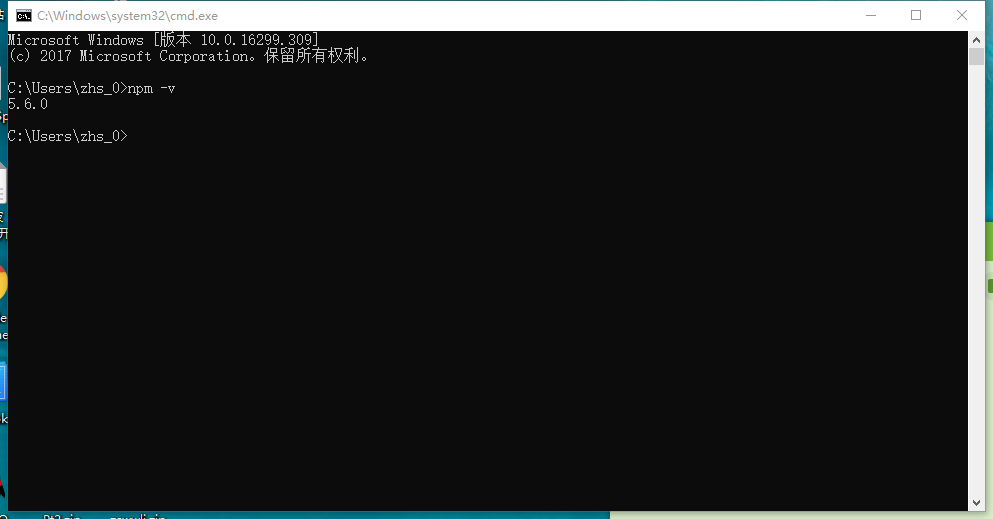在服务器项目开发过程中,总会牵扯到接口文档的设计与编写,之前使用的都是office写一个文档,不够直观。下面介绍一种工具生成Apidoc.,
该工具是Nodejs的模块,请务必在使用前安装好nodejs环境!
一.安装Apidoc
1.安装nmp环境,Windows环境可直接通过http://nodejs.org/下载安装包安装
2.安装后在cmd终端执行npm install apidoc –g如果执行失败跳到步骤3
3.安装npm首先先安装Homebrew在终端ruby -e "$(curl –fsSL
https://raw.githubusercontent.com/Homebrew/install/master/install)"
4.执行成功终端输入brew install node等待一段时间
5.执行成功终端输入npm –v确认是否npm安装成功

6.安装npm成功后执行执行npm install apidoc –g 安装apidoc即可。
二.apidoc使用
1.在项目根目录中创建apidoc.json文件
{
"name": "Apidoc merchant",
"version": "1.0.0",
"description": "智慧式车位锁Apidoc",
"title": "智慧式车位锁Apidoc",
"url" : "http://192.168.2.216:8080",
"sampleUrl": "http://192.168.2.216:8080",
"forceLanguage":"zh-cn",
"template": {
"withCompare": true,
"withGenerator": true
}
2.在对应接口上加上注释:
示例:
/** * 查找代理Agent * * @return */ /** * * @api {post} /agent/findLi 获取代理列表 * @apiName 获取代理列表 * @apiGroup agent 代理 * @apiVersion 1.0.0 * @apiDescription 获取代理列表 * * @apiParam {int} currentPage 当前页 * @apiParam {int} pageSize 查询条数 * * @apiSuccess {int} code 结果码 0:成功 1:失败 * @apiSuccess {Object} msg 消息说明 * @apiSuccessExample Success-Response: * HTTP/1.1 200 OK * { * code:0, * desc:'', * data:{} * } * * @apiError All 对应<code>code</code>请求错误 * @apiErrorExample {json} Error-Response: * HTTP/1.1 200 * { * code:-1, * desc:'', * } */ @RequestMapping(value = "/findLi", method = RequestMethod.POST) @ResponseBody public BaseReturn<Page<Agent>> findLi(@RequestParam int currentPage, @RequestParam int pageSize, Integer status) { List<Criterion> criterias = new ArrayList<Criterion>(); if (status != null) criterias.add(Restrictions.eq("status", status)); Page<Agent> page = agentService.findLi(currentPage, pageSize, criterias); BaseReturn<Page<Agent>> baseReturn = new BaseReturn<Page<Agent>>(); baseReturn.setData(page); baseReturn.setCode(BaseReturn.SUCCESSFULTAG); return baseReturn; }
3.执行终端命令apidoc -i example/ -o doc/执行成功就则会在该目录下生成doc文件。
// 典型用法
apidoc -i api/ -o doc/api [-c ./] -f ".*.js$"
-i 表示输入,后面是文件夹路径
-o 表示输出,后面是文件夹路径
默认会带上-c,在当前路径下寻找配置文件(apidoc.json),如果找不到则会在package.json中寻找 "apidoc": { }
-f 为文件过滤,后面是正则表达式,示例为只选着js文件
与-f类似,还有一个 -e 的选项,表示要排除的文件/文件夹,也是使用正则表达式示例:
apidoc -i C:Userszhs_0Desktopmerchant -o C:Userszhs_0Desktopmerchantsrcmainwebapppagesdoc
这样就会在C:Userszhs_0Desktopmerchantsrcmainwebapppagesdoc目录下生成项目的doc文档,点开index.html就会看到如下效果

三.apidoc代码注释
apidoc支持如下关键字
@api {method} path [title]
只有使用@api标注的注释块才会在解析之后生成文档,title会被解析为导航菜单(@apiGroup)下的小菜单
method可以有空格,如{POST GET}
@apiGroup name
分组名称,被解析为导航栏菜单
@apiName name
接口名称,在同一个@apiGroup下,名称相同的@api通过@apiVersion区分,否者后面@api会覆盖前面定义的@api
@apiDescription text
接口描述,支持html语法
@apiVersion verison
接口版本,major.minor.patch的形式
@apiIgnore [hint]
apidoc会忽略使用@apiIgnore标注的接口,hint为描述
@apiSampleRequest url
接口测试地址以供测试,发送请求时,@api method必须为POST/GET等其中一种
@apiDefine name [title] [description]
定义一个注释块(不包含@api),配合@apiUse使用可以引入注释块
在@apiDefine内部不可以使用@apiUse
@apiUse name
引入一个@apiDefine的注释块
@apiParam [(group)] [{type}] [field=defaultValue] [description]
@apiHeader [(group)] [{type}] [field=defaultValue] [description]
@apiError [(group)] [{type}] field [description]
@apiSuccess [(group)] [{type}] field [description]
用法基本类似,分别描述请求参数、头部,响应错误和成功
group表示参数的分组,type表示类型(不能有空格),入参可以定义默认值(不能有空格)
@apiParamExample [{type}] [title] example
@apiHeaderExample [{type}] [title] example
@apiErrorExample [{type}] [title] example
@apiSuccessExample [{type}] [title] example
用法完全一致,但是type表示的是example的语言类型
example书写成什么样就会解析成什么样,所以最好是书写的时候注意格式化,(许多编辑器都有列模式,可以使用列模式快速对代码添加*号)
@apiPermission name
name必须独一无二,描述@api的访问权限,如admin/anyone详细文档参考http://caixw.oschina.io/apido